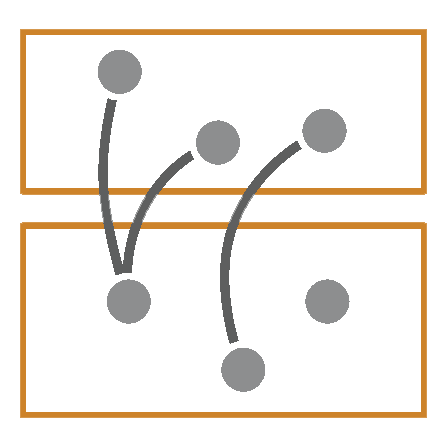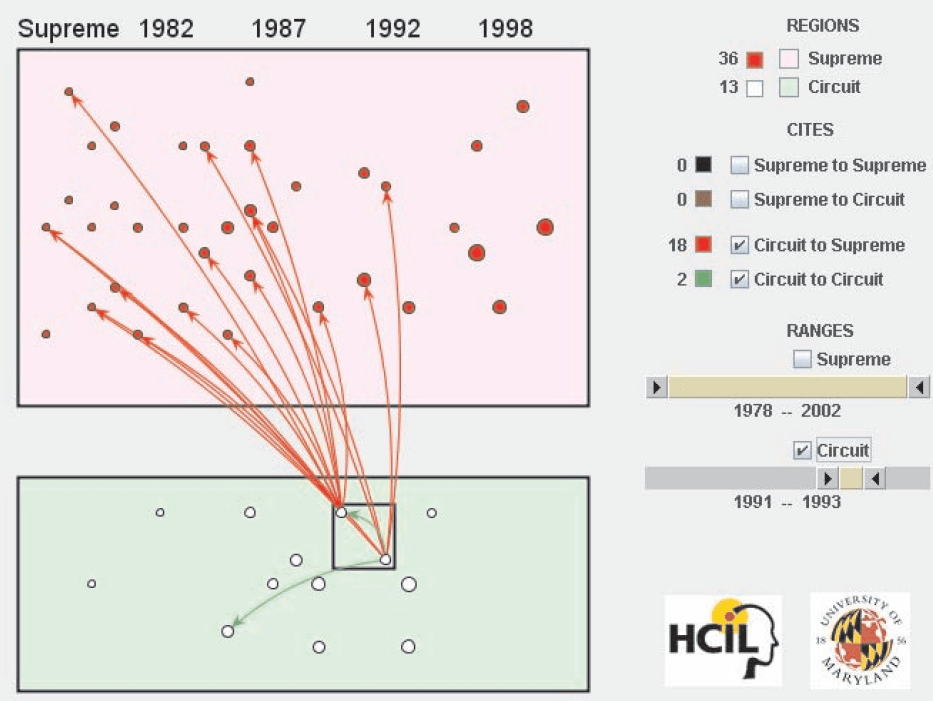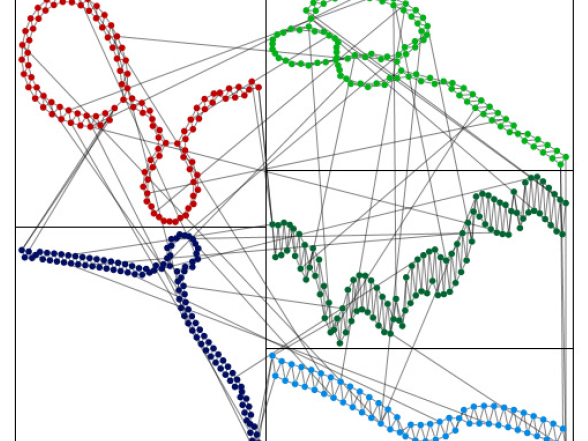Attribute-driven faceting groups nodes according to one or more attributes and places the elements of a group in a shared region.
Optimized for networks with few, but homogeneous or heteregenous node attributes. Also ideal for layered sparse or layered graphs.
Supports few, homogenous edge attributes, and tasks on neighbors.
Not ideal for dense, layered or tree networks. Also, ill suited for tasks on paths or clusters.


